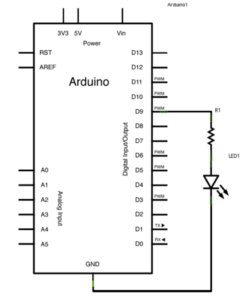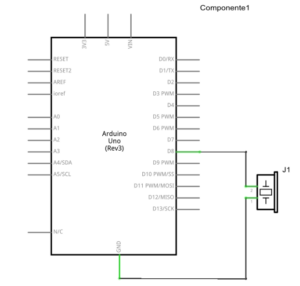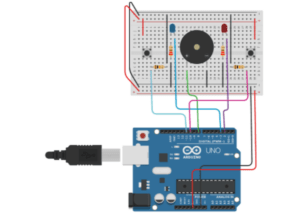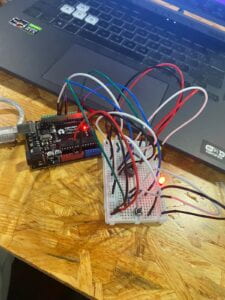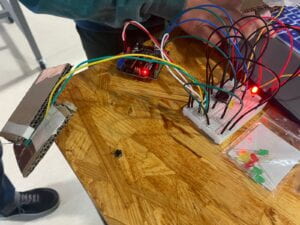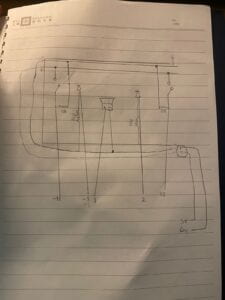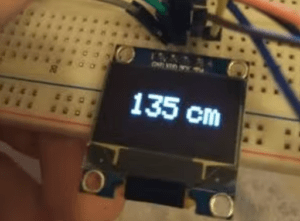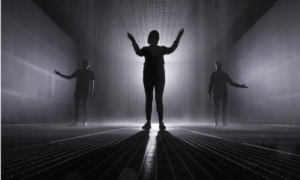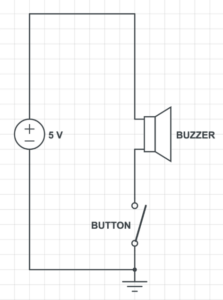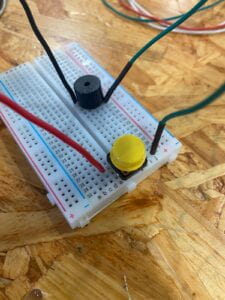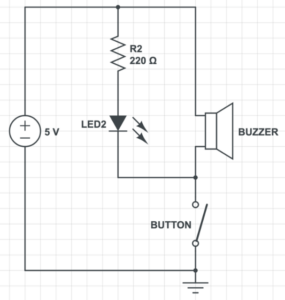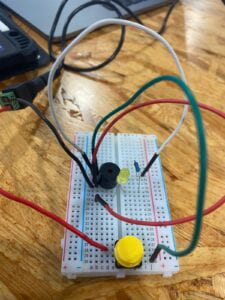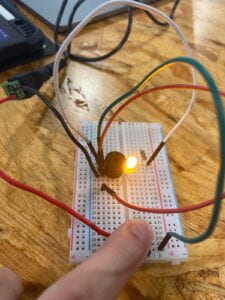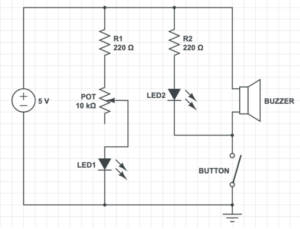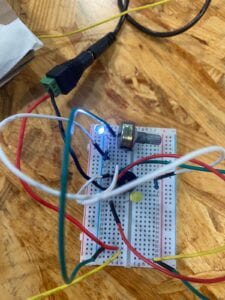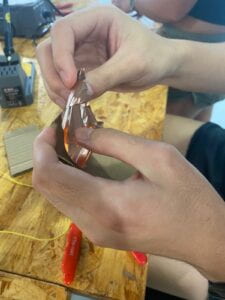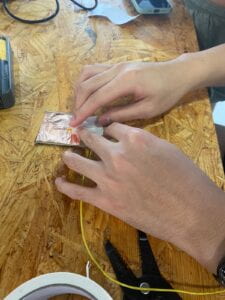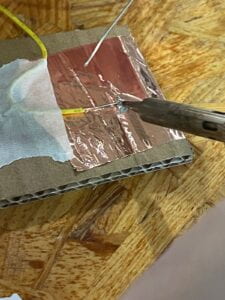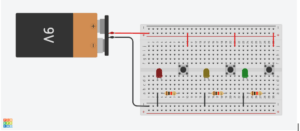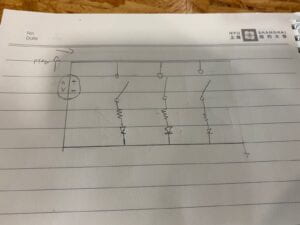Step 1: Prepare your tilt sensor
Task #1: Solder
The first task in this recitation was to solder 2 long cables into a tilt sensor. In this case, the tilt sensor did not have polarity.
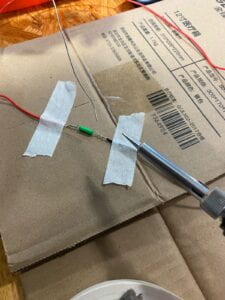
Task #2: Connect
We were then asked to wire the following schematic. The schematic was fairly simple, and did not produce major problems.
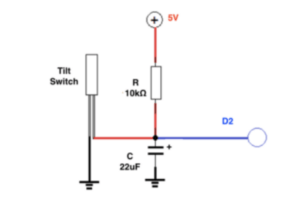
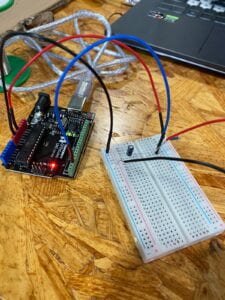
Task #3: Program
For the Initial code, we used the sketch provided in the instructions. This code allowed us to confirm if the sensor was working properly when tilting it.
int SENSOR_PIN = 2;
int tiltVal;
void setup() {
pinMode(SENSOR_PIN, INPUT); // Set sensor pin as an INP
Serial.begin(9600);
}
void loop() {
// read the state of the sensor
tiltVal = digitalRead(SENSOR_PIN);
Serial.println(tiltVal);
delay(10);
}
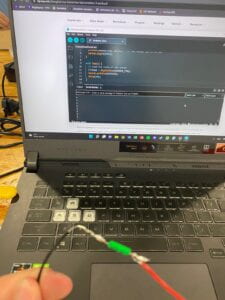
Video for Initial code:
Step 2: Refine the code
Task #1: Upload
For this task, we uploaded the following code provided to us. This code allowed for the sensor to display 0 or 1 intermittently depending on its position.
int SENSOR_PIN = 2;int tiltVal;
int prevTiltVal;
void setup() {
pinMode(SENSOR_PIN, INPUT); // Set sensor pin as an INPUT pin
Serial.begin(9600);}
void loop() {
// read the state of the sensor
tiltVal = digitalRead(SENSOR_PIN);
// if the tilt sensor value changed, print the new value
if (tiltVal != prevTiltVal) {
Serial.println(tiltVal);
prevTiltVal = tiltVal;
} delay(10);
}
Video code:
Step 3 & 4: Wear your sensor and Bicep Curl
This step was very straightforward, I just taped the sensor to my forearm in a way that would allow it to be activated when moving my arm up and down.
Video:
Task 1: add a conditional
The coding part proved a bit challenging for me. I needed some help from the professors. The code in red is the one for prompts 1 and 2.
- int SENSOR_PIN = 2;
- int tiltVal;
- int prevTiltVal;
- int curlnumber = 0;
- void setup() {
- pinMode(SENSOR_PIN, INPUT); // Set sensor pin as an INPUT pin
- Serial.begin(9600);
- }
- void loop() {
- // read the state of the sensor
- tiltVal = digitalRead(SENSOR_PIN);
- // if the tilt sensor value changed, print the new value
- if (tiltVal != prevTiltVal) {
- curlnumber++;
- Serial.println(curlnumber);
- prevTiltVal = tiltVal;
- }
- delay(10);
- }
Video:
Task #2: Count the curls
This task was a bit easier, and the steps were more clear. The red part of the code answers prompts 1, 2 , and 3.
- int SENSOR_PIN = 2;
- int tiltVal;
- int prevTiltVal;
- int curlnumber = 0;
- void setup() {
- pinMode(SENSOR_PIN, INPUT); // Set sensor pin as an INPUT pin
- Serial.begin(9600);
- }
- void loop() {
- // read the state of the sensor
- tiltVal = digitalRead(SENSOR_PIN);
- // if the tilt sensor value changed, print the new value
- if (tiltVal != prevTiltVal) {
- curlnumber++;
- Serial.println(curlnumber);
- prevTiltVal = tiltVal;
- }
- delay(10);
- }
Video:
Task #3: Set a limit
For task 3 I went back to the code and added the part highlighted in red by creating a “if” conditional.
- int SENSOR_PIN = 2;
- int tiltVal;
- int prevTiltVal;
- int curlnumber = 0;
- void setup() {
- pinMode(SENSOR_PIN, INPUT); // Set sensor pin as an INPUT pin
- Serial.begin(9600);
- }
- void loop() {
- // read the state of the sensor
- tiltVal = digitalRead(SENSOR_PIN);
- // if the tilt sensor value changed, print the new value
- if (tiltVal != prevTiltVal) {
- curlnumber++;
- Serial.println(curlnumber);
- prevTiltVal = tiltVal;
- if (curlnumber == 8) {
- Serial.println(“Good job”);
- curlnumber = 0;
- }
- }
- delay(10);
- }
Video:
Step 5: Exercise Challenge
For the exercise challenge I figured out that an easy one would be doing jumping jacks, since the arm motion was similar to bicep curls.
Video:
Documentation:
- Draw your own illustration sketches that showcase how a person would use this interactive training device.
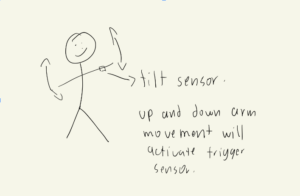
The sensor would actually keep count of how many repetitions of jumping jacks a person has done.
Reflect on your experiments
Reflecting back on this recitation, it appears that the sensor transitions from “HIGH” to “LOW’ at exactly 180 degrees. I also noticed that if you do a short curl its would trigger it faster. If you rotated a limb, the sensor would not trigger because it only reads motion on 2 axis. On the other hand, I noticed that if you shake the sensor, it would cause it to have inaccurate readings, and would make it trigger in quick succession. Also when I grabbed the wires from a few centimeters apart, I noticed it would make the sensor more sensitive. One of the constraints of this sensor is that if a user does not have limbs, it will actually be quite hard for them to use it. Since sticking it to their bodies would prove inconvenient, and would cause inaccurate readings.
